On a cloudy early morning in late spring, a few English Plantain flowers bloom in a Piney Woods Church Road pasture.
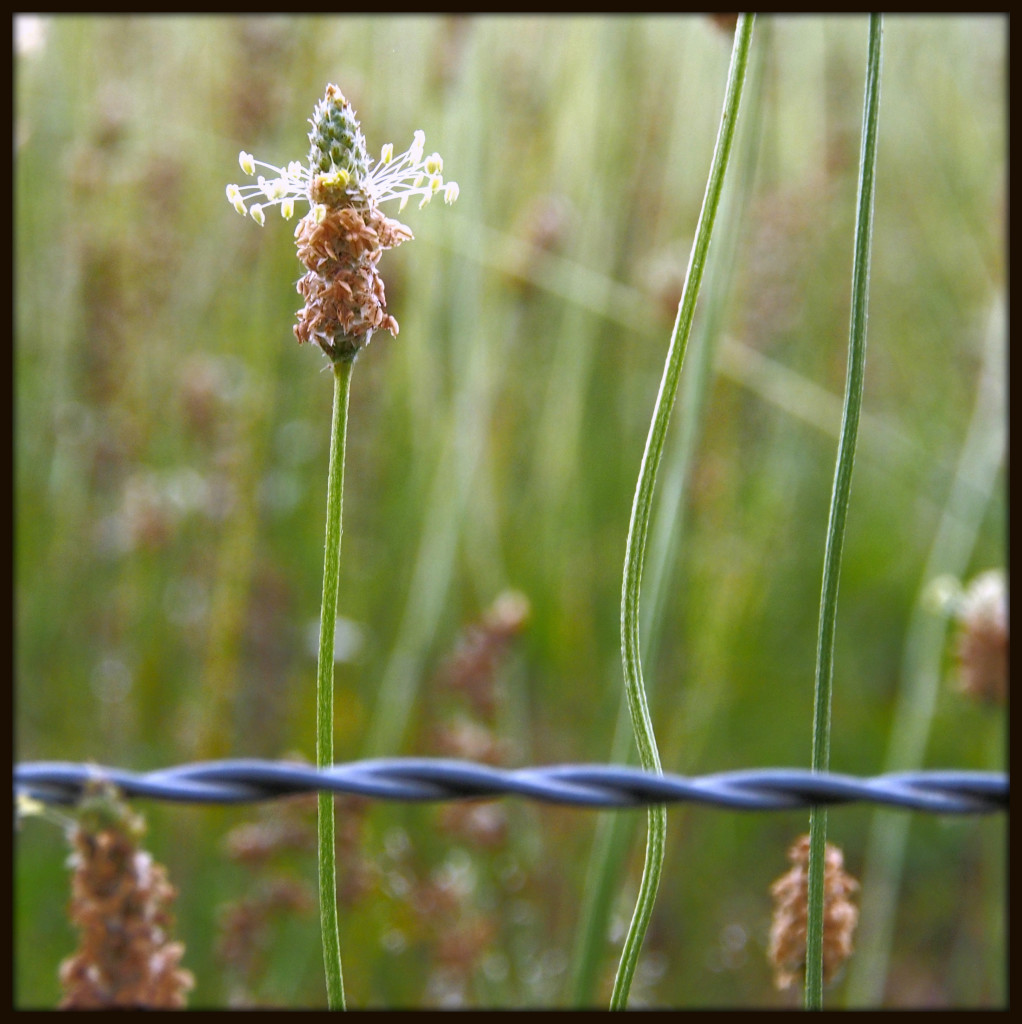
On a cloudy early morning in late spring, a few English Plantain flowers bloom in a Piney Woods Church Road pasture.

An hour or so before sunset along Piney Woods Church Road, I took this photograph of clouds illumined by the late-day sunlight, with a loblolly pine tree in the foreground. How I wish the clouds would bring us some rain!
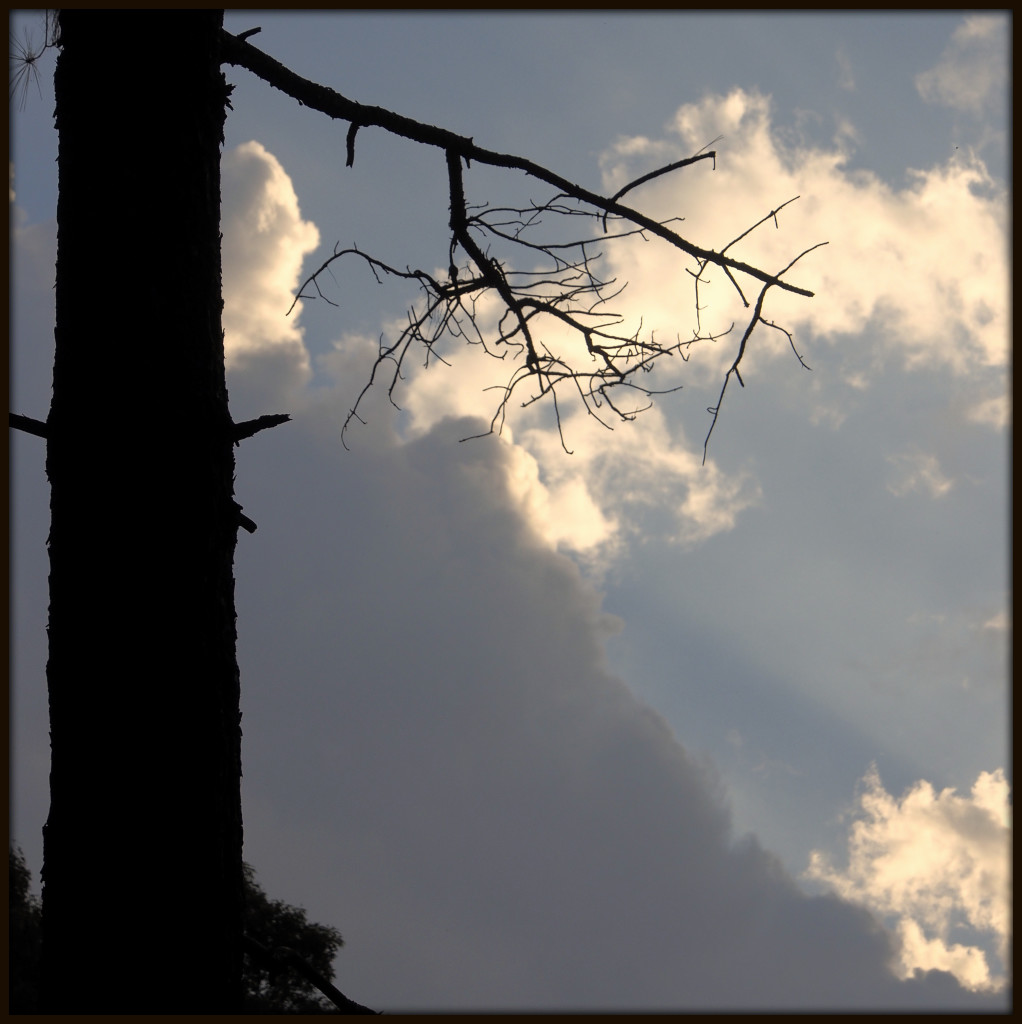
We have now gone a couple of weeks without measurable rainfall, and folks are beginning to get uneasy. Are we headed into another drought? Meanwhile, dust covers everything along Piney Woods Church Road — dust that settles in clouds in the wake of each passing car or truck. There is a sugary coating on the leaves of the roadside shrubs and saplings. There is no water left anywhere — ditches, ruts, and potholes have long been dry. For a photographer in a hurry, the road offers few opportunities. Given only fifteen minutes — my situation today — I had only two viable choices: daisies or spiders. The daisy fleabane continues to bloom, propelled to continue by a sort of biological inertia, when most all other roadside weeds and trees are spent — at least, until the next rains come. Pollinating bees and flies flock to the daisies, and some likely fall victim to the orchard orbweaver spiders that have set up shop at numerous locations along the roadway. Their webs are elegant, among the finest instances of nature’s geometry. For today, I settled for another spider image, this time a photograph depicting the spider as a sort of Master Controller at the center of its web, working the machinery of its own predatory impulses. Tomorrow? Maybe daisies again. Or perhaps a sunset, red sky intensified by dust in the atmosphere. If only it would rain….
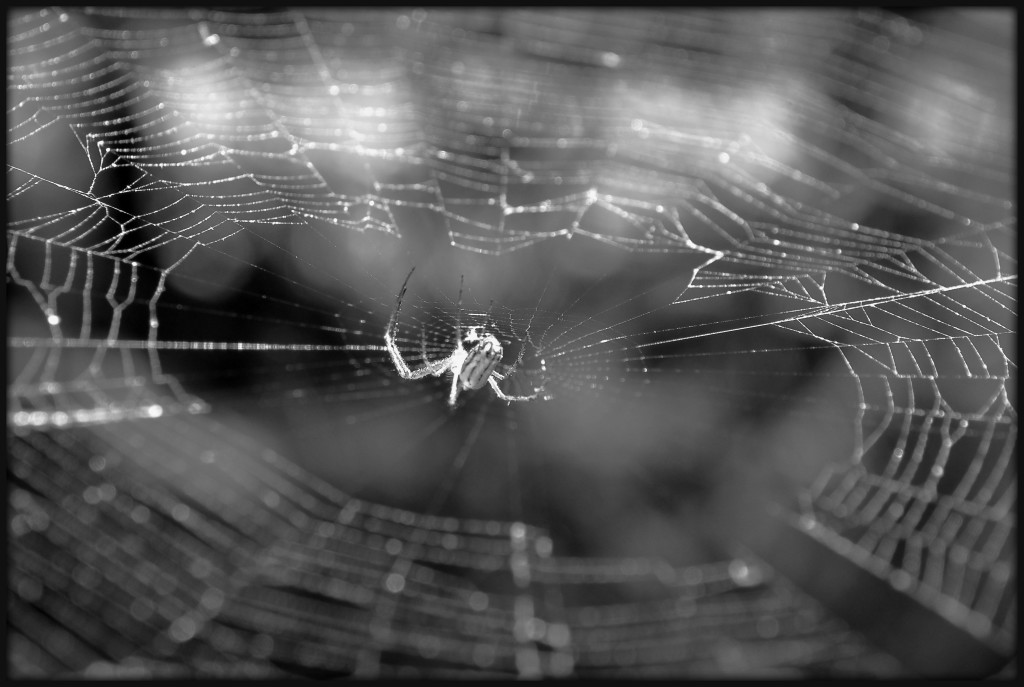
Yesterday afternoon, I visited the Shoals Spider Lilies (Hymenocallis coronaria, also known as Cahaba Lilies) along Flat Shoals Creek, in Harris County, Georgia. The property containing the stretch of Flat Shoals Creek where the lilies bloom has been in the same family since the 1830s, and the present owner, A. Stephen Johnson, has placed a Conservation Easement on the land, as well as willing it to the Nature Conservancy. The kind-hearted Mr. Johnson has not only made his land open to the public during the lily bloom period (late May into early June), but has gone so far as to place numerous trail signs and blazes along the path, as well as chairs for visitors to rest along their quarter-mile journey. He has even posted directions to his site here. There is limited parking, and it is a quarter-mile stroll down a pine-needle-covered driveway to reach the trailhead by Mr. Johnson’s cabin.
A bit of context is in order. A few days ago, I pulled a muscle in my leg; two days ago, I was so incapacitated that I had to get around the house wheeling myself in an office chair. It was only possible to visit Piney Woods Church Road by car, after an ordeal getting between the house and the garage. Yesterday, earlier in the afternoon, I hobbled down part of Piney Woods Church Road under my own steam, but only dared to venture part-way. Still, I hesitated to abandon the trip. I felt compelled to visit the Shoals Spider Lilies, whose bloom I consider to be one of the great natural wonders of the Southeast.
There are many species of spider lilies in the Southeast, but the Shoals Spider Lilies are among the most rare of them all. Thanks largely to dams and impoundments, the lilies (which grow only on islands among rocky shoals at the Fall Line in Alabama, Georgia, and the Carolinas) are restricted to about 50 populations. Among the most robust of Georgia’s holdings is this one, outside West Point, Georgia.
After an easy drive down I-85 and less than four miles of two-lane highway, we arrived at Mr. Johnson’s site. We parked our car at the driveway gate and set out down the trail. Thanks to a walking stick, I managed to press on down the driveway lined by mixed hardwoods and pines, along with a couple clusters of blooming wintergreen, which I admired but did not photograph. I was eager to see if the lilies were, in fact, still in bloom . We arrived at Mr. Johnson’s cabin; sadly, he has had to put iron bars over the doors and windows and install an alarm system, a high price to pay for inviting the public onto his land. A sign pointed to the beginning of the trail; below the sign, a pile of hiking sticks awaited reuse. A short jaunt through a forest that felt closer to an Appalachian woodland than a Piedmont one led us to a series of overlooks of the Shoals Spider Lilies, each one equipped with several lawn chairs. A sea of white greeted us as we looked out across the creek. We continued on, arriving at last at a convenient spot for accessing the water. Here, not only were chairs provided, but also a number of pairs of old sneakers for wading in the water. I did not have the courage to risk jeopardizing my injured leg by setting off into the stream channel; fortunately, a couple of flat rocks by the water’s edge led me to several blooming lilies. I was entranced, taking photograph after photograph of them. Like tulip poplars leafing out, the lilies have such complexity, such grace, that it is impossible to take a single picture and check them off a life list (if such a thing exists for wildflowers).
Here are a few images from my time among the lilies.
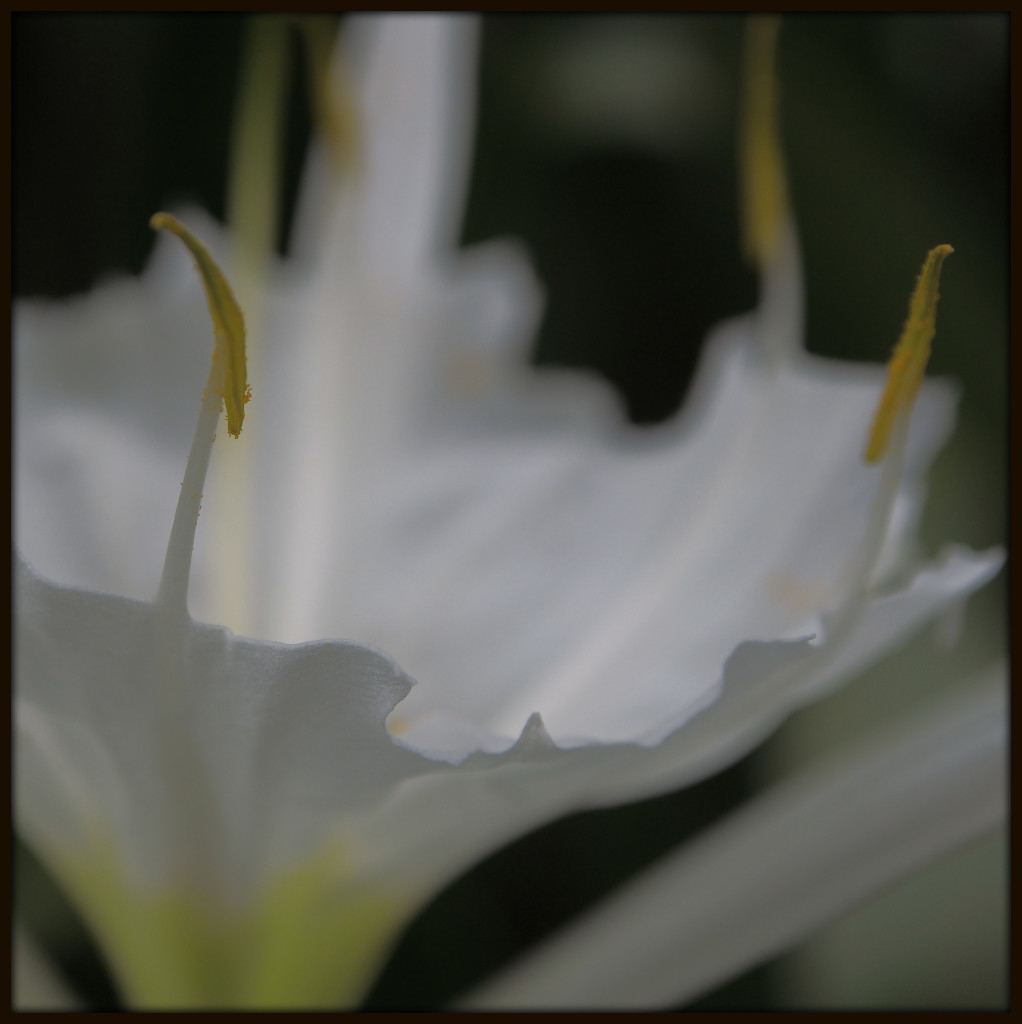
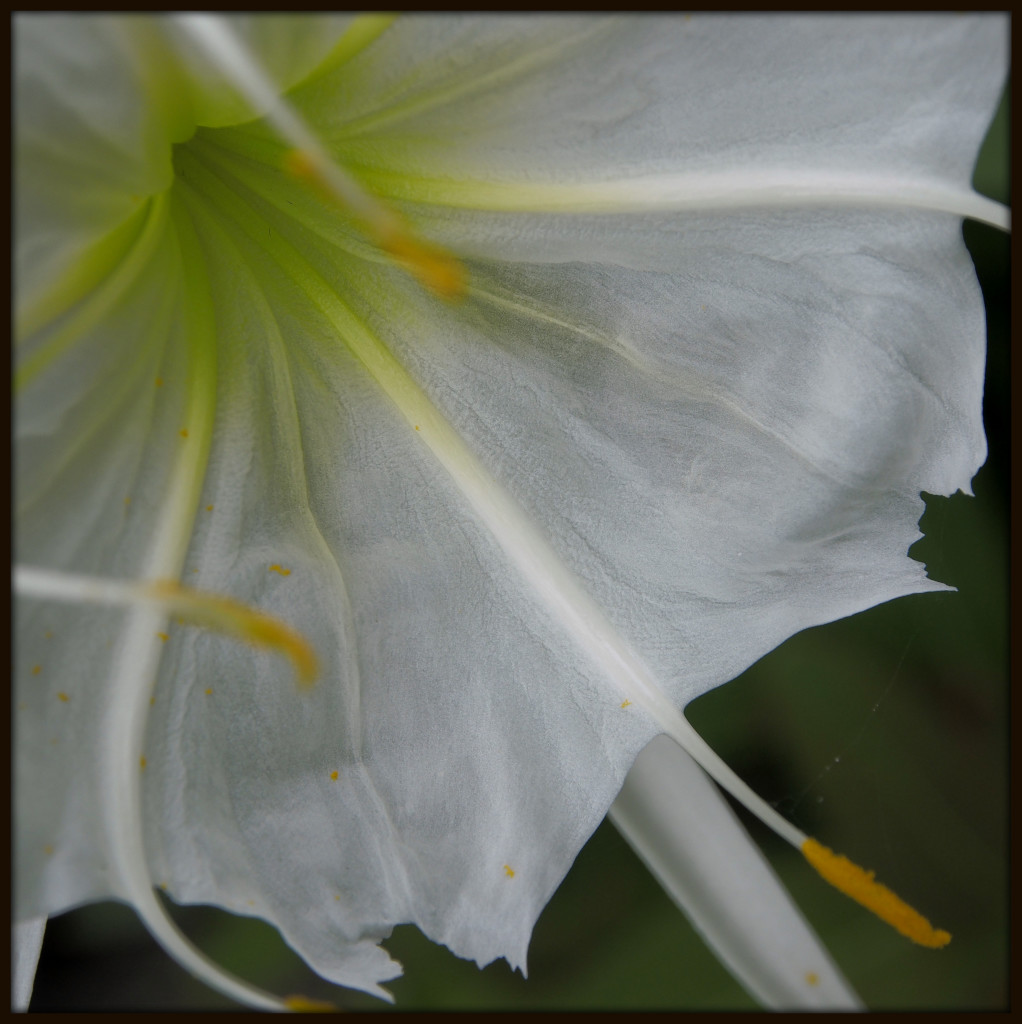
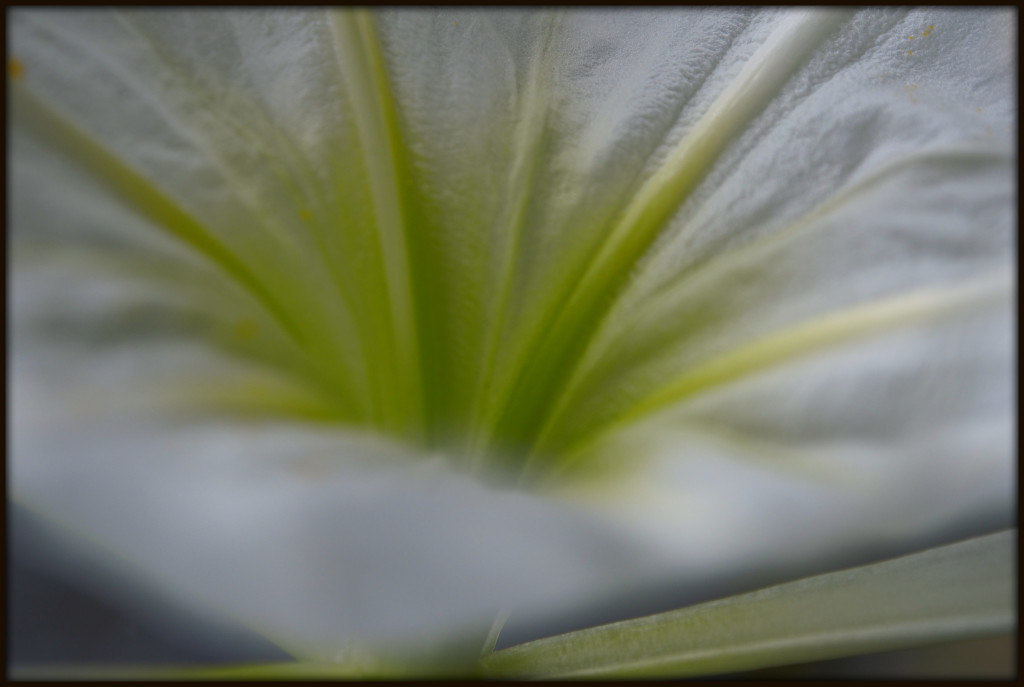

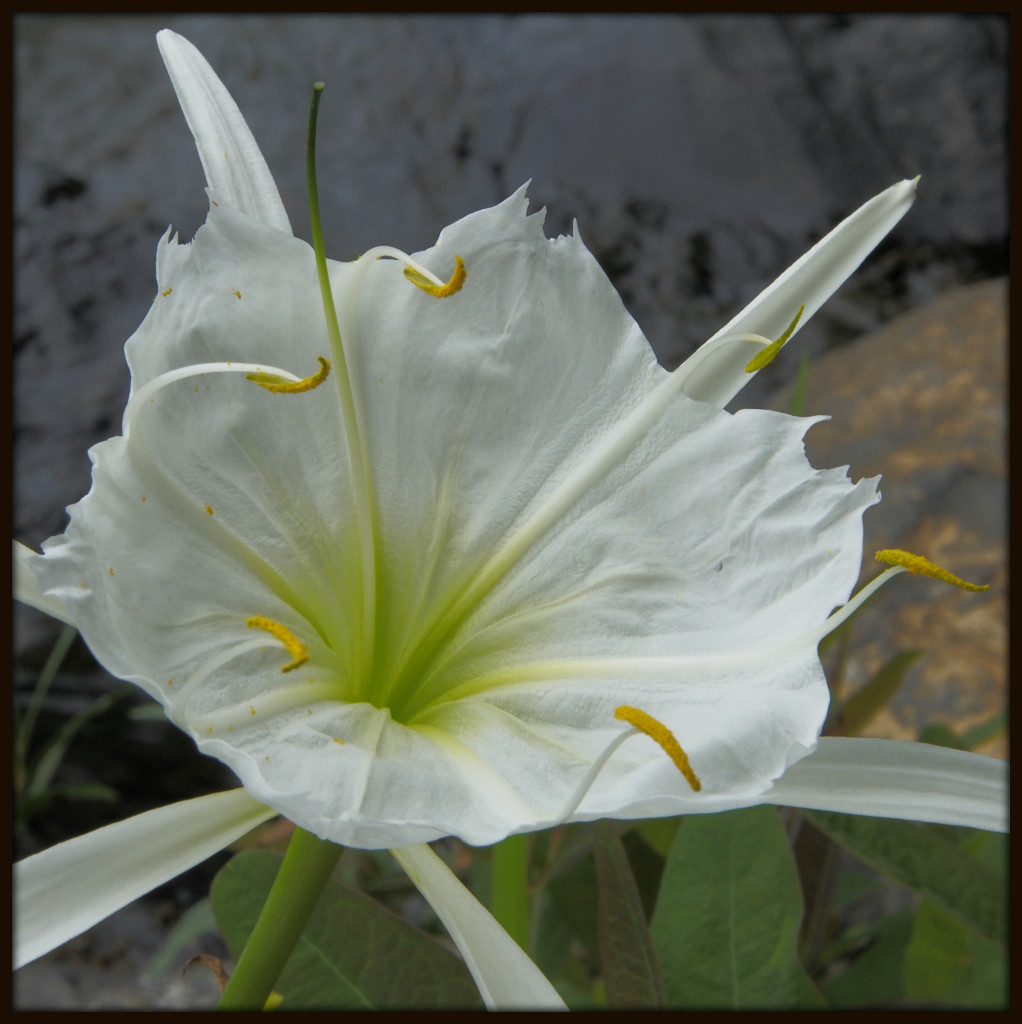
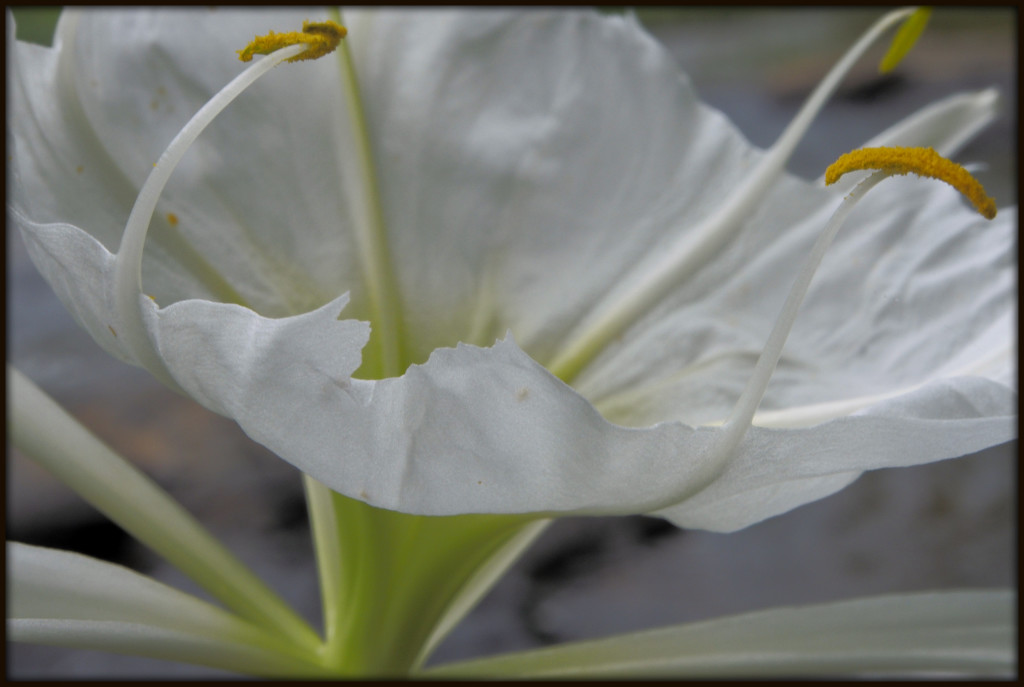
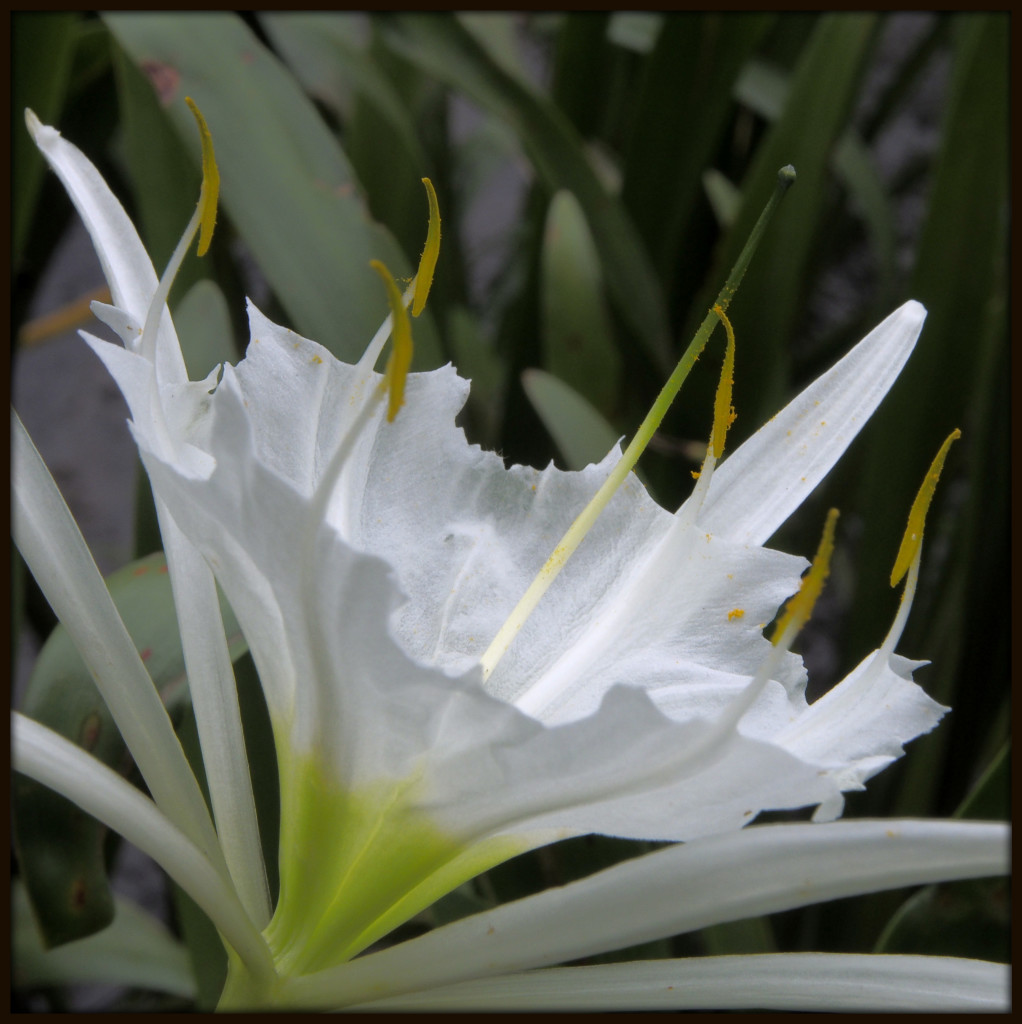
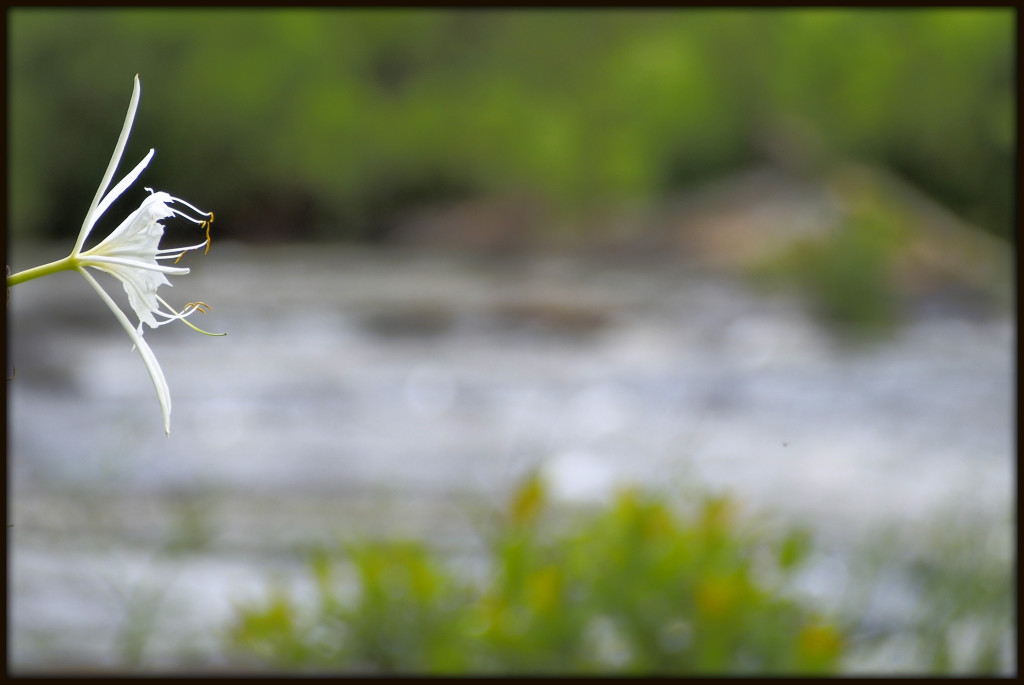
Among the lilies, I also saw quite a few half-inch blooms of a lovely magenta, blue, and white orchid-like flower, which I was able to identify as American Water Willow (Justicia americana), a native perennial herb commonly found in dense colonies in shallow streams and rivers throughout the eastern United States. Although not as showy as the Shoals Spider Lily, the American Water Willow provides great cover for aquatic life, including frogs and fish.

Emboldened by having somehow managed to walk as far as the lilies, I noticed that the trail continued upstream, toward “Cades Cave”. The further I went down the trail, the more I felt committed to seeing whatever was at the end. This trail was less heavily traveled, though, and much steeper in places. I pressed on, perhaps another quarter mile, to what was more like a cove than a cave; a massive rock had fallen from the steep bank of the stream, forming an alcove without a roof beside the creek. While it was a bit anticlimactic, nearby were showy white blossoms of Oakleaf Hydrangea (Hydrangea quercifolia) and brilliant red blooms of Fire Pink (Silene virginica).
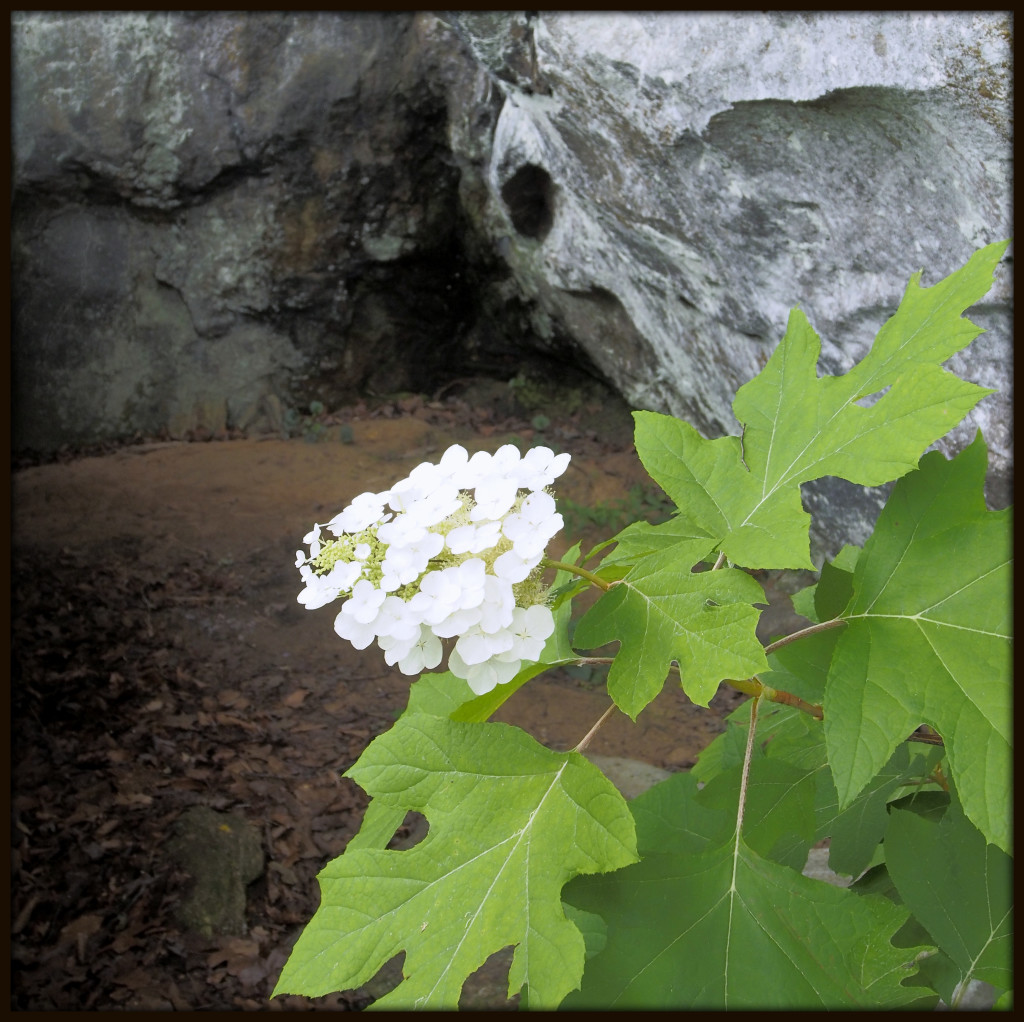
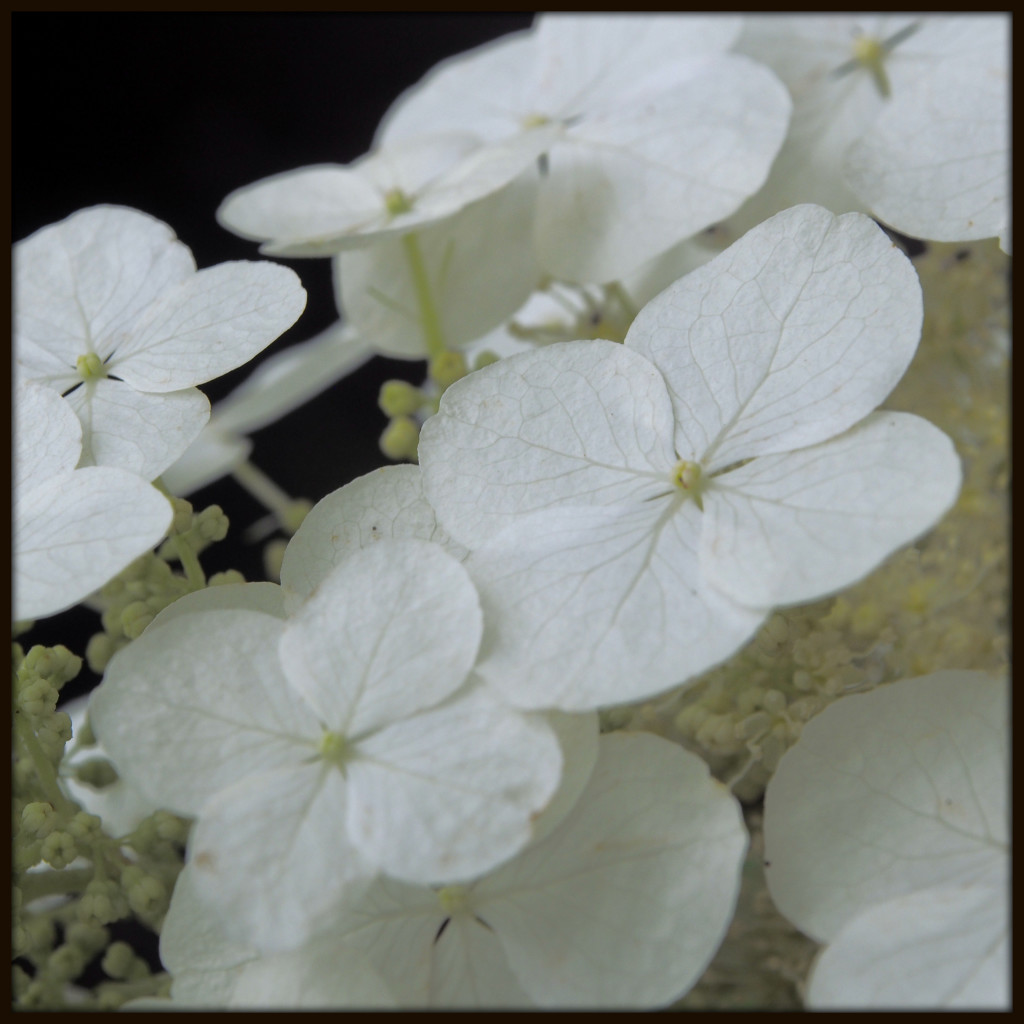
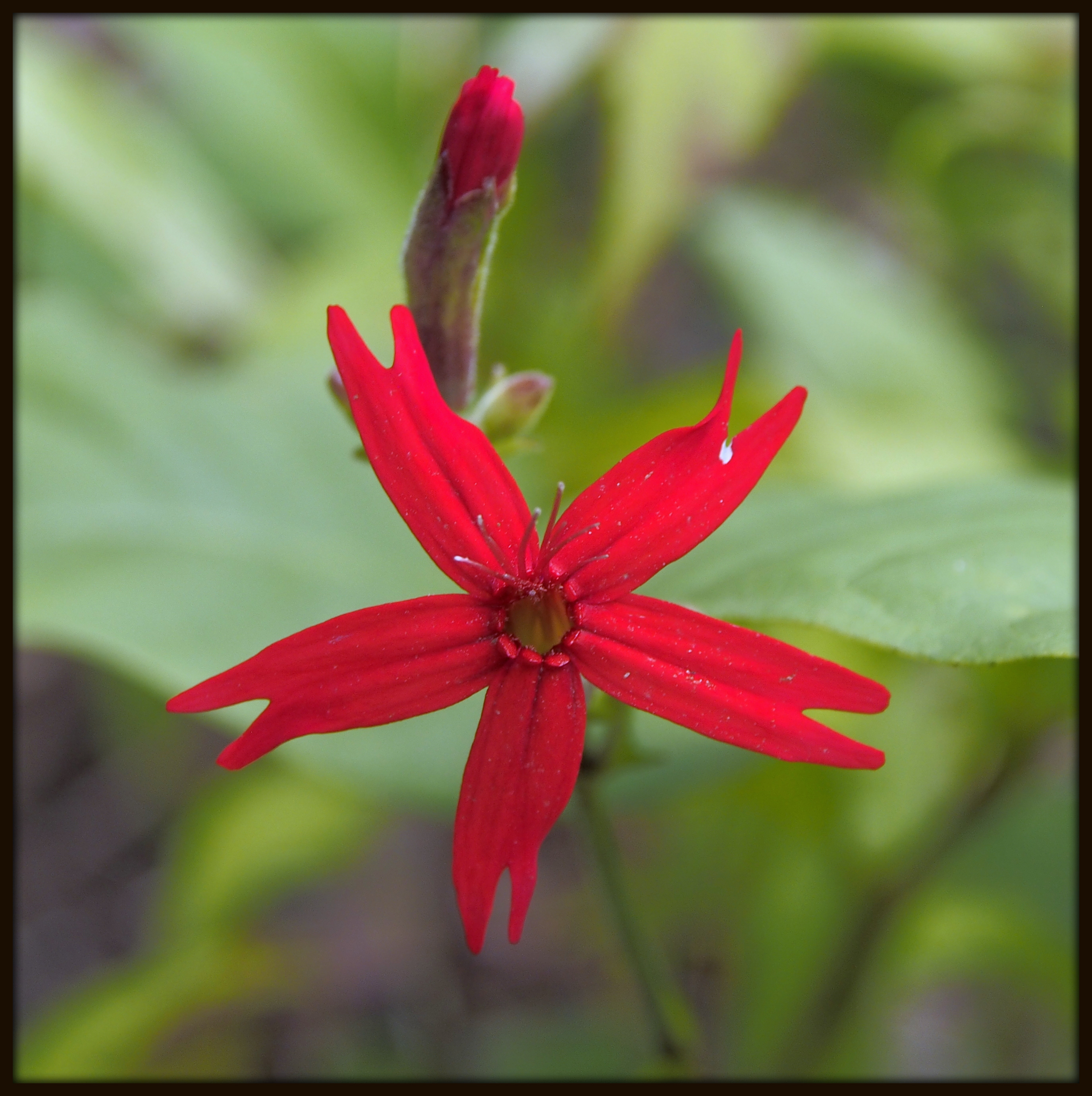
My leg having improved considerably since yesterday, today I was able to park near the Rico Rd. intersection and hobble my way up Piney Woods Church Road about a third of the distance and back again. I passed some minute yellow flowers, perhaps an eighth of an inch across, and took a few photographs. But the find of the day was definitely this robber fly or assassin fly, in the family Asilidae (very possibly Promachus fitchii), feasting on a small moth. Robber flies are aggressive predators that pierce their prey with a proboscis, delivering a blend of neurotoxic and digestive enzymes that paralyze their victims and dissolve tissues and internal organs, which they then ingest as if through a straw.

“Caterpillar sheds his skin, to find a butterfly within,” Donavan sang in his 1967 Billboard #11 hit song, “There is a Mountain.” The tune, with its simple Buddhist-inspired lyrics and a lovely, catchy flute melody, was recently revived in a recording by Kenny Loggins. In the 2009 Disney music video, Loggins is encircled by joyful young children clapping and shaking tambourines. But metamorphism in insects is far from child’s play. In fact, Donavan’s picture is highly inaccurate. A caterpillar des not molt to reveal a butterfly inside. Instead, it forms a chrysalis, inside which the caterpillar’s body completely dissolves, reconstituting itself as an entirely new organism, a butterfly. Metamorphism in butterflies is much closer to the mythical phoenix rising from the ashes than an actor stepping out of one costume to reveal another one. It is as if two different actors are involved: one to play the role of the caterpillar, the other the butterfly. According to Darwin’s theory of evolution, this odd process developed gradually, in stages, over a vast amount of time. But have you ever stopped to wonder how that could have happened?
Frank Ryan’s 2011 publication, “The Mystery of Metamorphosis: A Scientific Detective Story” explores the question of how metamorphosis may have come about. Strangely enough, metamorphism in animals has not been studied as much as one might imagine. In fact, the currently dominant theory of gradual evolution does not work very well, particularly in cases of metamorphism that occur among invertebrates living in the ocean. And that is where the research of Donald Williamson comes in, and where “The Mystery of Metamorphosis” opens.
Donald Williamson has been studying for decades the larval forms of various sea creatures, including sea stars, brittle stars, sea urchins, and sea squirts. These organisms are classified by their adult forms, because often their larval forms are nothing like the adults. What is even more odd is that not all of the species of these organisms actually undergo metamorphosis at all. A few do not. Others go through very strange metamorphoses indeed. One sea star, Luidia sarsi, has a bilaterally symmetrical, free-swimming larva. Inside the gut of this larva, a tiny adult sea star develops. The larva does not change into the adult. Instead, the larva eventually “births” the adult form, and then continues living for a time on its own, without reproducing. Eventually, the radially symmetrical adult sea stars will reach sexual maturity, broadcast egg and sperm into the water, and the result will be a new generation of larvae.
Then there are the sea squirts. As adults, they look like strange glass tubes attached to the sea floor or perhaps a boat bottom, where they spend their days pumping water into their bodies through one opening and releasing it through another. With the exception of a few diehard couch potatoes, there is no human equivalent to this sessile, brainless organism. As larvae, however, sea squirts resemble miniature tadpoles, with primitive brains and spinal cords. Inside the larval tissues, the adult form begins to develop, almost like a parasite – as if there were two different organisms involved rather than just one. When they are ready to become adults, sea squirts sense the presence of a suitable substrate to attach to, point their bodies head-downward, and begin to lose all of their larval properties. Their tail dissolves, and so do their brains – all to be reconstituted in the adult form.
Studying these odd forms, Williamson proposed a daring evolutionary explanation. What if, early in the history of life, species boundaries weren’t as tightly defined as now? What if organisms were able to hybridize with other organisms of different species, different classes, perhaps even different phyla altogether? Since reproduction took the form of broadcast spawning, it would have been possible – quite likely, in fact – that there were many pairings of egg and sperm from entirely different organisms. If some of these pairings were successful, the result could have been a new organism, maintaining characteristics of both of its forbearers. In such a way, organisms might have developed larval forms that they did not have previously. Imagine the creative potential of a world where cross-hybridization took place! As Ryan relates toward the end of his book, we might not need to imagine that condition at all. Instead, we can look to the fossil record for evidence of just such a possible past, toward the dawn of multicellular life, over 500 million years ago.
Ryan’s book is captivating, even a bit jarring, with its proposal that there may be much more to evolution than the gradualist model proposed by Darwin. “The Mystery of Metamorphosis” is an excellent reminder that there is much that is still unknown, that the development of life on Earth still holds many wonders to explore. It is not easy going, particularly for the reader not schooled in biology in general and the nature of insect homones in particular. But it is worth the journey to explore such wild ideas as these, ideas that conventional Darwin’s Theory of Evolution by Natural Selection might declare impossible. But as Shakespeare observed in “Hamlet”, “There are more things in heaven and earth, Horatio, than are dreamt of in your philosophy.”
This article was originally published on August 19, 2011.
Today was, without doubt, the most difficult day I have experienced in my photo-odyssey thus far. A couple of pulled muscles and tendons in my left leg required me to drive to Piney Woods Church Road yesterday, hobbling my way along only half the distance of the road. Today, the leg had worsened considerably, to the point that I could put practically no weight onto it at all. For a few minutes, I actually considered the prospect of abandoning the enterprise. Just getting from my office to the back door of the house was a frustration; getting across the yard and driveway to the car took several minutes. I arrived at the car, lifted my leg by the sock top to place it in the car (it is too weak to lift without support), and realized I had forgotten my car key. Fortunately, the cell phone was in the car, so I was able to call my wife in the house (easily the shortest-distance call I have ever made) and ask her to bring it to me. I abandoned all thought of getting out of the car and attempting a brief roadside hobble; I settled instead for taking photographs out the open window of the Prius. Fortunately, a neighbor provided a ready-made subject for the camera — a new horse fence along the roadway, completed just this past week. Here’s hoping I will be back up to at least a few minutes of groundwork by tomorrow afternoon.
